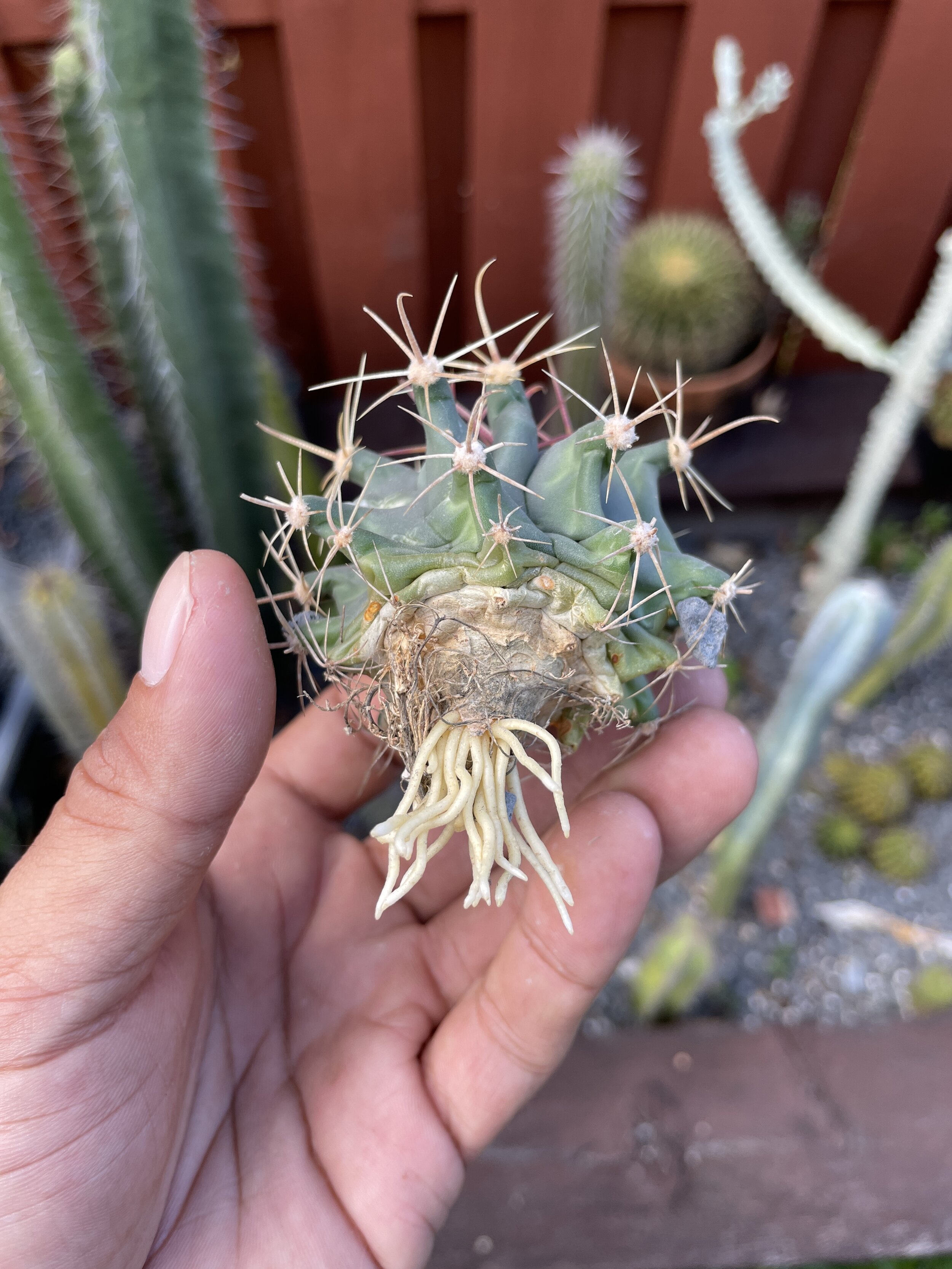What to do with a new cactus or succulent after shipment.
So you found that dream Copiapoa cinerea, or maybe an Ariocarpus Godzilla that you had been looking for obsessively and were lucky enough to claim it on time! The package arrives and you have soil and a nice pot on hand, so you are ready! Maybe you have read that Copiapoa and Ariocarpus are both sun-loving plants and look for the perfect sunny spot to place it. WAIT!
Lets talk a little bit about light exposure, and water, before you select a location for your new plant.
Correct light exposure for a cactus fresh out of a shipping box.
Cacti and succulents carry out many tasks by utilizing hormones that act as “triggers” within a plant’s anatomy, that start-off important processes. When a plant senses moisture for example, it deploys a hormone that tells its root system where the moisture is and what direction it should grow towards. On the crown, a similar process tells the plant what direction to grow towards by deploying a hormone to the parts of the plant that receive the highest solar radiation. This second process is also involved in shielding the plant from excessive sun, by tilting the plant in a direction that is optimal for photosynthesis but also by making the tissue which is exposed to the higher levels of radiation, more resistant to such solar radiation. What does this mean for us in cultivation?
It means that plants slowly build up a tolerance to sun exposure, in a very similar way that human beings do. If you were to travel from a norther location where your skin was not accustomed to much sun, down to the tropics (where the sun is more intense) and did not care to apply sunscreen, you would likely burn. Cacti are very much the same. In order to shield them from the initial burn that can come from being used to the total darkness of a box, we must provide shade-cloth or other materials, to filter the sun until the plant is able to acclimate to it’s new environment.
Acclimating a new cactus to full sun.
There are two ways to acclimate your new plants, and either works just as well. The most important thing is that the changes in exposure must be done slowly over time. Check out the examples below:
Dedicated area for new arrivals: I personally have an area dedicated to new plants that must be acclimated, which has a dual layer of mosquito net (cheap and does the trick) on one side, and a single layer of mosquito net on the other side. When a plant arrives, I place it under the dual layer for a month to a month and a half and then move it to a single layer for an additional month. Most of my plants will then stay under a single layer, since only some generas, and larger plants can take full sun.
Single-plant solar protection: Sometimes when a plant arrives that I intend on keeping, I will acclimate it directly in its final location by covering it with a small piece of mosquito net. Since most of my grow area is covered by a layer of mosquito net, the small piece of mosquito net acts as the secondary layer of protection which I remove after a month or two.
Whichever method you prefer is OK, and both work just as well. I would only comment that I have had instances where the small piece of mosquito net (option 2) touched a plant and left a mark so it’s important to provide a good solid structure for the mosquito net so it will not come into contact with the plant, if possible.
Watering a new cactus or succulent.
Some people like to water their cacti as soon as they arrive, while others prefer planting in slightly moist potting media. Living in South Florida where humidity is above 85% throughout most of the year, I go above and beyond to avoid rot so I never water a cactus or succulent until it has rooted into the soil. This can take 2 weeks (small seedlings) to 2-3 months (mature and hydrophobic plants). You can check if a plant has rooted by lightly tugging on it. If the plant moves freely, it has not rooted. When your cactus does set down roots, it will stay firm in place. I do not recommend removing a cactus from it soil to check for roots as that will likely stunt their growth. After 2 months, it’s safe to water even without checking for roots as long as it is during the growing season (spring and summer for most plants).
After I water, i usually move plants to their permanent location where they receive 70% sunlight for 10 hours during the day. Once they have set root, usually they are also ready for more solar exposure but you should keep an eye on them just to make sure there is no whitening of the skin which would mean sunburn. If your plants turn a bit red or purple these are signs of sun-stress but are OK as long as the colors are not too strong. A little stress is what cacti love. With all that said, please keep in mind that every environment is different, so you should use these tips as a staring point to do your own experimentation in order to figure out what your plants love. I hope this helped some of you :)




